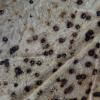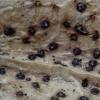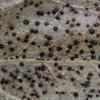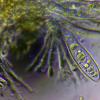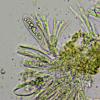
30-12-2025 17:14
 Bernard CLESSE
Bernard CLESSE
Bonjour à toutes et tous,Pourriez-vous aider Albe

29-12-2025 10:15
Hulda Caroline HolteHello, I found and collected this propoloid ascom

30-12-2025 16:44
Pascal DucosBonjour,Une anamorphe rose stipitée, très nombre

30-12-2025 09:04
Hello.A Pyrenomycete sprouting sparsely but very d

29-12-2025 17:44
Isabelle CharissouBonjour,J'aimerais savoir si d'autres personnes au

12-11-2021 00:03
Lepista ZacariasHi everybody,A week ago in my fiels trip I noticed

29-12-2025 17:12
 Bernard CLESSE
Bernard CLESSE
Bonjour à toutes et tous,Pourriez-vous m'aider à
Little black asco on dead Hedera helix leaves
Christopher Engelhardt,
02-04-2020 17:22

Hi,
today, when collecting a dead leave of Hedera helix with lots of black dots on it, I was pretty sure I found Trochila craterium.
But under the miscoscope I found most Asci empty. In one good Ascus I found spores of 18-20 - 5-6 µ. Several others had only round drops of different size.
As the spore measurement does not fit Trochila craterium, what did I find?
Collected near Luebeck, N Germany, 2nd April 2020.
Thanks & regards
Chris
Peter Püwert,
02-04-2020 19:03
Re : Little black asco on dead Hedera helix leaves
Hi Chris,
in my opinion Eupropolella britannica Greenh. et Morgan- Jones.
Greetings Peter.
Hans-Otto Baral,
02-04-2020 20:37

Re : Little black asco on dead Hedera helix leaves
I agree, except that it is not clear whether Laurus (britannica) and Hedera have the same fungus. I have it as E. hederae nom. prov. in my folders.
No sequence of either of them appears to exist, so this would be helpful in clarifiying the distinction as well as the uncertain family placement.



